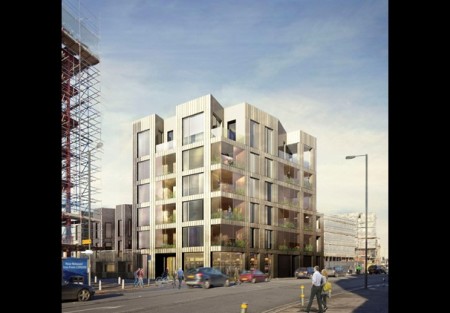“Simply building 400,000 houses alone may not solve the housing problem,” says Godwin Okri

When Henry George was writing on how monopolistic land ownership could cause poverty, little did he know that his daughter (Elizabeth Magie) would go on to design the game of Monopoly in the 1800s as a way of illustrating how monopolistic land ownership could cause social pain.
Having a well-functioning housing market is not only important for the economy, it also has wider socio-political benefits. This is why economists and policymakers convulse when any housing issue is turning into a crisis.
Currently, the UK property market is characterised by soaring property prices, limited housebuilding and a growing population. The average property price in London is £500,000; in the UK, the average property price is £300,000, an increase of 7% year-on-year. The average salary in London is £30,338 but the salary needed to buy a terrace property is £142,000. The whole thing is causing affordability crisis and is threatening Britain’s reputation as a nation of homeowners.
The historic failure to build more houses, the increase in population, the influx of foreign buyers and economic policies pursued by successive governments have all contributed to the housing crisis today.
The net effect of this crisis is this: first time buyers are finding it almost impossible to access the property ladder; this is causing generation rent, which goes against the principle of “property owning democracy” promised.
A new All-Party Parliamentary Group for housing and planning has been set up to examine ways of tackling the housing crisis. The Group has to find a solution. But what is the solution?
Bank of England: According to the Bank of England (BOE), pursuing macro-prudential measures are important. The BOE is focusing on curbing excessive credit growth and encouraging reasonable borrowing in a “low for long” interest rate environment. In order to prevent the housing market from overheating, last summer (2015) the Financial Policy Committee (FPC) introduced regulations requiring banks not to give residential mortgage to borrowers which is more than 4.5 times their income. It also requires banks to “stress test” borrowers’ ability to repay the loans. The FPC is asking for more powers to control the buy-to-let market. The “powers of direction” would allow the FPC to make regulations on, inter alia, debt-to-income and loan-to-value ratios.
Government Policy: As an attempt to solve the housing crisis, the government has introduced a number of rules and policies:
From the supply side, the Chancellor announced in the Autumn Statement (2015) that he will double the housing building budget to £2bn ($3bn) to build 400,000 new affordable homes by 2020 of which 200,000 would be starter homes, which can be purchased by FTB at 20% discount. The discount would only apply if the property price is below £250,000 outside London or £450,000 if the property is in London.
From the demand side, the government tries to differentiate between FTB and buy-to-let (BTL) investors. To encourage FTB access the property ladder, the government introduced Help to Buy Scheme. Under this Scheme, FTB can get interest-free loan of up to 40% of the property value provided s/he has 5% deposit.
Help-to-Buy ISA was also introduced to further assist FTB. It gives FTB savers £50 bonus for every £200 saved up to £12,000.
The government believes that BTL investors have contributed to the housing crisis. As a result, a number of changes have been introduced to control the exuberance of the BTL investors: Firstly, in the summer budget, the Chancellor announced that a restriction would be placed on the amount a landlord could claim on the mortgage interest. This was followed by the autumn statement when the Chancellor announced that anyone buying a second home would pay a higher rate of stamp duty.
But are the government policies the right solution for the housing crisis?
Solution: Simply building 400,000 houses alone may not solve the problem in the long run. Increasing the numbers of FTB accessing the property ladder would eventually “consume” the 400,000 houses built. In the end, we will be back to square one! The government should also be encouraging a renaissance of small to medium builders to undertake building in suitable small sites.
However, the key panacea is to decentralise commercial and political activities. Most activities are centred around London. The government speak about the Northern Powerhouse. Thus far, nothing has been done to show that this is not just rhetoric. Decentralisation would spread people around the UK and relieve the housing pressure in London and the South East.
Secondly, stamp duty should be set locally to take account of regional differences in economic power.
Thirdly, incentive should be given to BTL investors who invest away from London and the South East.
Lastly, limit should be placed on the number of properties a BTL invest can own in London and the South East.
Having said all these, it is difficult to know whether the policymakers will ever listen. As they say: you can take the horse to an African river, but you cannot force it to drink










